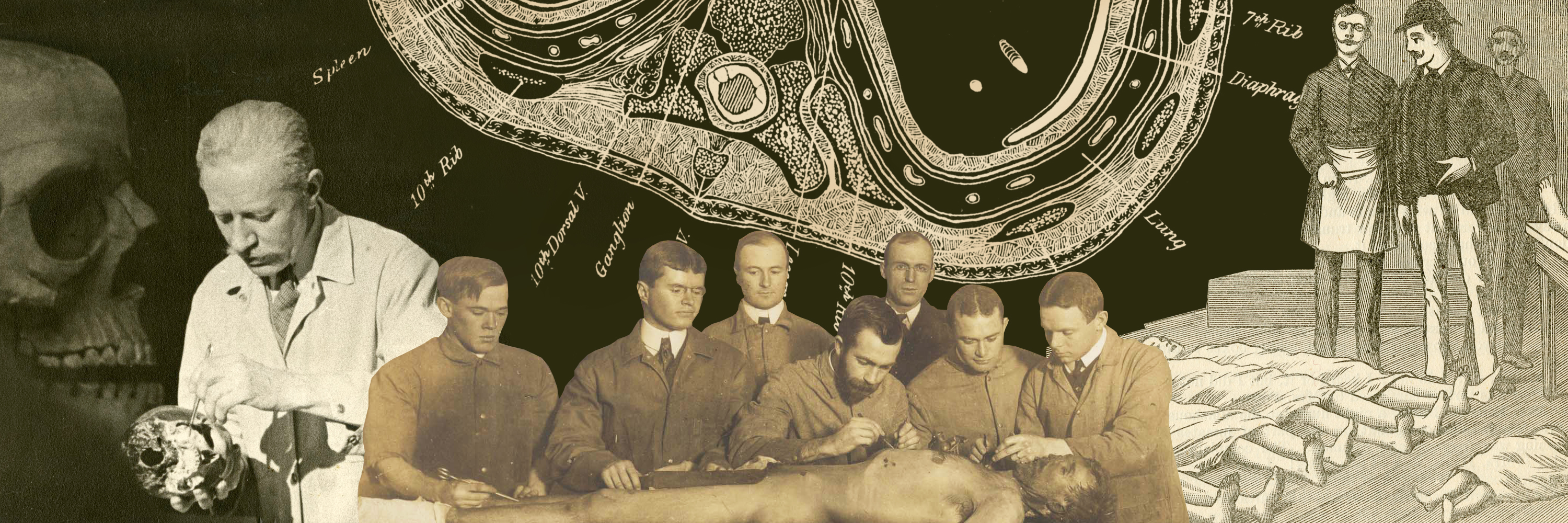Browse Exhibits (3 total)
Bigelow-Wallis and Warren-Kaula Teaching Watercolors

The Bigelow-Wallis and Warren-Kaula watercolor collection is a series of works in Warren Anatomical Museum originally compiled by the Harvard Medical School Department of Anatomy for use in the anatomical lecture hall. The average size of the watercolors is 69 cm wide x 100 cm high and the works are mounted with metal grommets in the corners for hanging. The bulk of the collection is the 189 works commissioned by Harvard Medical School Professor of Surgery Henry Jacob Bigelow from lithographer Oscar Wallis between 1849 and 1854. The remaining 46 watercolors in the collection were painted circa 1894 by William Jurian Kaula for Harvard Medical School Moseley Professor of Surgery John Collins Warren. The Department of Anatomy combined the two physician-artist collaborations into one teaching series within the Warren Anatomical Museum in the early 20th century.
Body of Knowledge, A History of Anatomy (in 3 parts)

Submissions from the Center of the History of Medicine to the physical and electronic components of the exhibition, Body of Knowledge, A History of Anatomy (in 3 parts), on display from March 6, 2014 to December 5, 2014 at the Collection of Historical Scientific Instruments and in the companion Gallery Guide.
Nature of Every Member: An Anatomy of Dissection at Harvard Medical School

Why study human anatomy? To John Hall, writing his poem An Historicall Expostulation, in 1565, it was the chief of medical arts which had to be mastered “if ye will cure well anything.” Anatomy was one of the three first areas of medical study at Harvard, and John Warren, the first member of the faculty, was a renowned anatomist and surgeon. And though Oliver Wendell Holmes could maintain by 1861, that “human anatomy may be considered an almost exhausted science. From time to time some small organ which had escaped earlier observers has been pointed out… but some of our best anatomical works are those which have been classic for many generations,” anatomy through dissection continued to be studied and taught to first-year medical students, and it still holds a place in the modern curriculum today. The Nature of Every Member chronicles the long and distinguished history of the study and teaching of human anatomy through dissection at Harvard Medical School, moving from the very foundation of the school to the present day. Coupled with teaching through human dissection are the changes and developments in anatomical legislation, as the illicit practice of grave-robbing for anatomical study gives way to legal instruments of anatomical gift for science.
